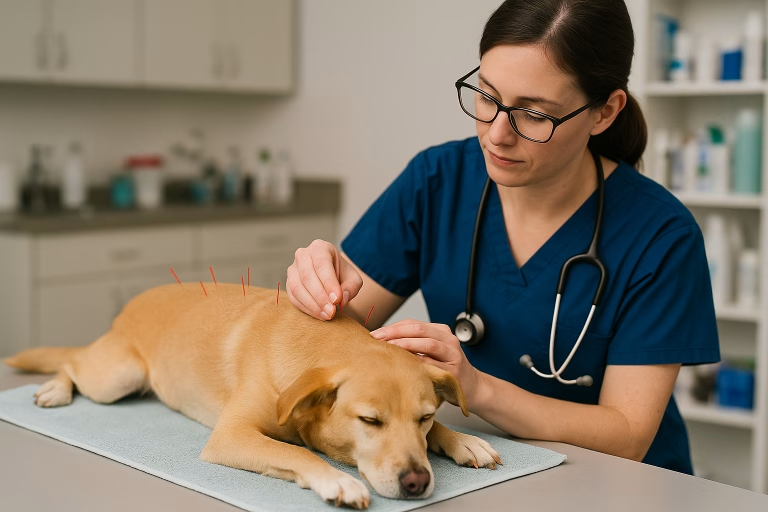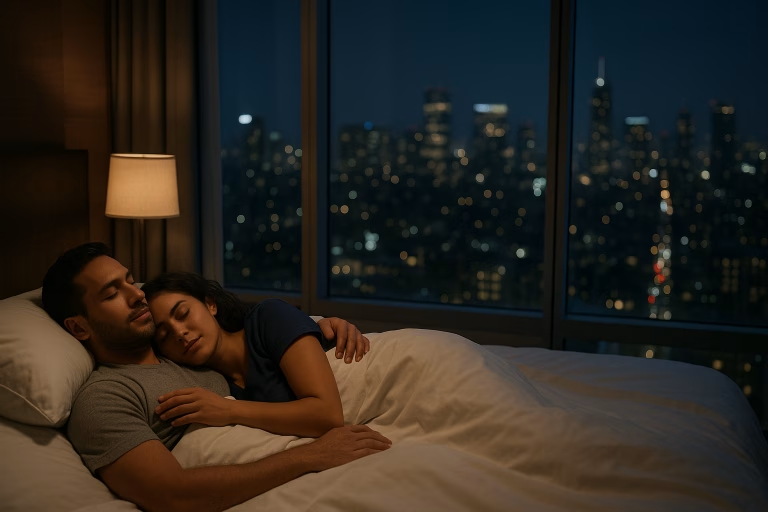
If you’ve ever woken up in the middle of the night with a sharp, sudden pain in your calf or foot, you’re not alone. Nighttime leg cramps, also known as nocturnal leg cramps, are a common issue that can affect anyone—but they’re especially frustrating for older adults, athletes, and pregnant women.
These painful muscle spasms often strike without warning and can last anywhere from a few seconds to several minutes. While they usually go away on their own, the discomfort and lack of sleep they cause can take a toll on your daily life.
Thankfully, there are effective ways to prevent and relieve leg cramps. From supplements that restore important minerals like magnesium and potassium, to fast-acting topical sprays and homeopathic options, the right remedy can make a big difference.
In this guide, we’ve rounded up the best pharmacist-recommended leg cramp relief products for 2025. Whether you’re looking for natural muscle relaxers, electrolyte boosters, or sleep-friendly options, this list has something for everyone—so you can rest easy, pain-free.
What Causes Leg Cramps at Night? Top Reasons Behind Muscle Spasms
Leg cramps, especially during the night, are more than just annoying—they’re often your body’s way of signaling an imbalance or stress. Understanding the root causes can help you treat them effectively and prevent them from coming back.
Here are the most common causes of leg cramps and why they happen:
🥤 Dehydration
When your body doesn’t have enough fluids, your muscles can become more prone to tightening and spasming. Dehydration reduces circulation and makes it harder for muscles to relax after use.
- Not drinking enough water, especially after exercise or during hot weather, increases cramp risk.
- Alcohol, coffee, and certain medications (like diuretics) can worsen dehydration.
⚡ Electrolyte Imbalance
Your muscles rely on minerals like magnesium, potassium, calcium, and sodium to contract and relax properly. If any of these are too low or too high, cramps can happen.
- Magnesium helps relax muscles.
- Potassium and calcium help send signals between nerves and muscles.
- A drop in any of these can cause painful, sudden spasms—especially at night.
🏋️ Overuse, Fatigue, or Poor Stretching
If you’ve been standing or walking all day—or working out harder than usual—your muscles may be overstressed.
- Overexertion builds up lactic acid and depletes minerals.
- Inadequate stretching before or after physical activity can make things worse.
- Cramps may happen at night when tired muscles are trying to rest.
💊 Medication Side Effects
Certain medications are known to trigger leg cramps as a side effect.
- Diuretics (water pills) can flush out vital minerals like potassium and magnesium.
- Statins (for cholesterol) and beta blockers (for blood pressure) can irritate nerves or muscles.
- Always check with your pharmacist if your meds might be the cause.
🧬 Poor Circulation or Nerve Compression
If blood isn’t flowing well to your legs, or if a nerve is being compressed (like from sitting too long), your muscles can cramp.
- This is common in people with varicose veins, spinal issues, or diabetes.
- Cramping can occur more when lying down due to reduced circulation.
🤰 Pregnancy
Pregnant women often experience cramps, especially in the third trimester.
- Weight gain, fluid shifts, and pressure on nerves can trigger cramping.
- Hormonal changes may also play a role in nerve sensitivity and muscle function.
🎂 Aging and Muscle Loss
As we age, we naturally lose muscle mass and flexibility. Nerve and circulation efficiency also decline.
- Older adults are more prone to nighttime cramps due to less active muscles and slower recovery.
- Reduced physical activity can make muscles more prone to stiffness and spasms.
Tip: If you’re experiencing frequent leg cramps, try keeping a symptom journal. Track when they happen, what you ate, how active you were, and any medications you’re taking. This can help you and your healthcare provider identify the root cause more easily.
Recognizing the Symptoms of Leg Cramps: What to Watch Out For
Leg cramps can be more than just a moment of discomfort—they often signal deeper issues like dehydration or mineral imbalance. Identifying the symptoms early can help you find fast and effective relief.
Here are the most common signs and symptoms of leg cramps:
- 🦵 Sudden, Sharp Pain
- Most cramps feel like a stabbing or intense tightening in the lower leg, foot, or thigh.
- The pain can strike suddenly, especially during rest or sleep.
- 🧱 Muscle Hardness or Tightness
- The affected muscle often feels hard, knotted, or visibly tense to the touch.
- This tightness can last several seconds to minutes, even after the pain subsides.
- ⏳ Lasting Discomfort
- After a cramp passes, the muscle may feel sore, tender, or weak for several hours or even days.
- 🌙 Nighttime Episodes (Nocturnal Cramps)
- Many people experience leg cramps while lying in bed or during sleep, waking them up in pain.
- These nighttime cramps often affect the calves or feet.
- 🔁 Recurring Cramps
- Some individuals get cramps regularly—night after night or after certain activities like exercise or standing for long periods.
- 🚫 Limited Range of Motion
- During a cramp, it may be difficult to flex or stretch the leg or foot.
- Movement often intensifies the pain at first before helping it subside.
If you frequently experience any of these symptoms, it may be time to look into targeted leg cramp supplements or speak with your healthcare provider to rule out underlying conditions.
Let me know if you want me to continue with the “When to See a Doctor” section next!
Top 10 Best Leg Cramp Relief Supplements and Remedies (2025)
All of the following products are top-rated by users and pharmacists for their ability to reduce frequency and intensity of leg cramps.
1. Hyland’s Leg Cramps PM (#1 Pharmacist Recommended)
Ingredients: Quinine, magnesium, and homeopathic botanicals
How It Works & What Makes It Special: Combines traditional homeopathic ingredients to relieve muscle cramps and spasms. Quinine addresses nerve excitability associated with cramps, while magnesium relaxes muscle tissue.
Side Effects: Minimal due to homeopathic formulation, though some may experience nausea or sensitivity to quinine.
Counseling Points:
- Take at the first sign of cramping
- Suitable for older adults
- Do not exceed dosage to avoid quinine sensitivity
2. Theraworx Relief Fast-Acting Foam
Ingredients: Magnesium sulfate, aloe, green tea extract
How It Works & What Makes It Special: Magnesium sulfate penetrates quickly through the skin, reducing inflammation and nerve sensitivity. Aloe and green tea soothe the skin and provide antioxidant protection.
Side Effects: Rare; possible mild skin irritation or dryness.
Counseling Points:
- Apply to affected area and massage gently
- Use consistently for best results
- Store in a cool area to maintain foam consistency
3. Leg Cramps by Boiron
Ingredients: Cuprum metallicum, Magnesia phosphorica
How It Works & What Makes It Special: This homeopathic formula targets neuromuscular excitability and smooth muscle cramping. Cuprum helps relax tense muscle fibers.
Side Effects: Very low risk; may cause temporary worsening of symptoms in rare cases.
Counseling Points:
- Dissolve tablet under tongue 15 minutes before bedtime
- Avoid eating/drinking 15 minutes before/after dose
- Consistent nightly use enhances effect
4. Dr. Tobias Magnesium Glycinate
Ingredients: Magnesium glycinate
How It Works & What Makes It Special: Highly bioavailable form of magnesium that helps balance electrolytes and calm overactive nerves, with minimal gastrointestinal upset.
Side Effects: Mild stomach discomfort if taken on an empty stomach
Counseling Points:
- Take with meals for best absorption
- Avoid use with high-dose calcium supplements
- Recommended before bedtime
5. Trace Minerals Research Electrolyte Stamina Tablets
Ingredients: Potassium, magnesium, calcium, zinc
How It Works & What Makes It Special: Provides a full spectrum of electrolytes lost during sweat or dehydration. Helps restore neuromuscular coordination.
Side Effects: Possible mild nausea or stomach upset if taken without food
Counseling Points:
- Stay hydrated while using
- Take with meals
- Avoid excessive caffeine/salt intake
6. Zhou Nutrition Muscle BCAA + Electrolytes
Ingredients: BCAAs, magnesium, potassium
How It Works & What Makes It Special: Branched-Chain Amino Acids repair microtears in muscle fibers and prevent exercise-induced cramps. Electrolytes support hydration and nerve signaling.
Side Effects: Rare; potential bloating or mild GI upset
Counseling Points:
- Use during or after physical activity
- Best when combined with stretching
- Avoid mixing with carbonated drinks
7. MegaFood Magnesium Soft Chews
Ingredients: Magnesium citrate
How It Works & What Makes It Special: Tasty chewable form supports muscle relaxation and nerve health. Derived from whole food sources for gentle absorption.
Side Effects: May cause soft stools in sensitive individuals
Counseling Points:
- Chew thoroughly before swallowing
- Best taken at night for sleep and cramp relief
- Do not mix with iron supplements
8. Nature Made Potassium Gluconate
Ingredients: Potassium
How It Works & What Makes It Special: Essential for electrical signaling in muscles. Helps balance sodium and reduce muscle contraction misfires.
Side Effects: High doses may cause stomach upset or affect heart rhythm
Counseling Points:
- Consult doctor if on diuretics or ACE inhibitors
- Don’t exceed recommended daily value
- Take with food
9. Boericke & Tafel CrampsAway
Ingredients: Quinine, Magnesia Phosphorica, Calcarea
How It Works & What Makes It Special: Combines three homeopathic ingredients to address calcium regulation, nerve tension, and muscle sensitivity.
Side Effects: Minimal, but not recommended for those sensitive to quinine
Counseling Points:
- Use at bedtime or onset of cramps
- Avoid use with blood pressure medications
- Keep dry and away from heat
10. Cramp Defense Magnesium Malate
Ingredients: Magnesium malate
How It Works & What Makes It Special: Malic acid combined with magnesium enhances energy production in cells while reducing muscle pain and tension.
Side Effects: GI upset, especially if taken without food
Counseling Points:
- Take with food and water
- May take several days to build effect
- Ideal for chronic sufferers
When Should You See a Doctor for Leg Cramps? Warning Signs You Shouldn’t Ignore
While occasional leg cramps are usually harmless, frequent or severe muscle spasms can sometimes signal an underlying health issue. Knowing when to seek medical attention can help you avoid complications and get proper treatment.
Here are the top signs that it’s time to see a doctor for leg cramps:
- 🔁 Frequent or Persistent Cramps
- If cramps occur several times a week or interfere with your sleep and daily routine.
- ⚠️ Severe, Unbearable Pain
- Cramping that causes intense, ongoing pain or doesn’t improve with stretching or home remedies.
- 🦵 Swelling, Redness, or Warmth
- These could be signs of a more serious condition like a blood clot or deep vein thrombosis (DVT).
- 🌡️ Cramps with Muscle Weakness or Numbness
- If you feel tingling, numbness, or have difficulty moving the affected area afterward.
- 💊 Linked to a New Medication
- Some drugs (like diuretics, statins, or blood pressure meds) may trigger cramps—your doctor may adjust the dose or recommend alternatives.
- 🧬 Cramping with Other Health Changes
- If you’re also losing weight, experiencing fatigue, or noticing changes in your urine or blood pressure, cramps could be part of a larger issue.
Important: If you have underlying conditions like diabetes, heart disease, or kidney problems, don’t ignore recurring cramps—these may be early warning signs of complications.
👉 Tip: Keep a log of your symptoms, including frequency, time of day, intensity, and any triggers. This can help your doctor make an accurate diagnosis faster.
Lifestyle Tips to Prevent Leg Cramps Naturally: Daily Habits for Better Muscle Health
Making a few smart changes to your daily routine can go a long way in reducing leg cramps and supporting overall muscle function. These lifestyle tips are easy to follow and can help prevent painful nighttime spasms.
Try these proven lifestyle tips to prevent leg cramps:
- 💧 Stay Hydrated All Day
- Drink plenty of water to keep muscles hydrated and functioning properly.
- Limit sugary drinks, alcohol, and excess caffeine that can cause fluid loss.
- 🧂 Balance Your Electrolytes
- Eat foods rich in magnesium (like leafy greens), potassium (bananas), and calcium (dairy or fortified alternatives).
- Consider electrolyte supplements if needed, especially after workouts or hot weather.
- 🧘 Stretch Before Bed
- Gentle calf and hamstring stretches can reduce nighttime cramps.
- Try holding each stretch for 30 seconds, especially before sleep or after exercise.
- 🚶 Stay Active, But Don’t Overdo It
- Light exercise like walking or yoga improves circulation.
- Avoid standing or sitting in one position too long—move every 30–60 minutes.
- 🧦 Wear Compression Socks
- These help improve circulation, especially if you sit or stand for long periods during the day.
- 💤 Improve Sleep Position
- Sleep with your legs slightly elevated to promote blood flow.
- Avoid sleeping with toes pointed downward to prevent calf tightening.
- 🧂 Avoid High-Sodium Foods
- Too much salt can throw off your body’s mineral balance, especially if you’re not drinking enough water.
- 💊 Review Your Medications
- Talk to your doctor or pharmacist if you suspect a medication might be causing cramps. There may be an alternative.
Bonus Tip: Try keeping a nighttime leg cramp journal to track triggers, routines, and relief strategies that work best for you.
Final Thoughts: Finding Lasting Relief from Leg Cramps
Leg cramps—especially at night—can be painful, frustrating, and disruptive to your daily life. But the good news is, they’re often manageable with the right mix of supplements, hydration, and healthy habits.
To help you get consistent relief and improve your overall muscle health, remember these key takeaways:
- ✅ Choose the Right Supplement for You
- Magnesium, potassium, and electrolyte-based remedies can work wonders for most people.
- Consider your lifestyle, health conditions, and personal preferences when picking a product—some prefer topical relief, while others like chewables or capsules.
- 💧 Hydration Is Key
- One of the simplest ways to prevent cramps is to drink enough water daily, especially if you’re active or live in a hot climate.
- 🧘 Stretching Works Wonders
- A few minutes of light stretching before bed or after long periods of sitting/standing can greatly reduce your cramp risk.
- 🩺 Talk to a Healthcare Professional
- If you’re getting cramps frequently or they’re severe, consult your doctor. There may be an underlying cause or a medication contributing to the issue.
- 🛒 Be Consistent With Your Routine
- Natural remedies and supplements often take a few days or weeks to show full effects. Stick to your chosen treatment plan to get the best results.
- 🌿 Think Holistic, Not Just Quick Fix
- True relief comes from a combination of good nutrition, regular movement, hydration, and smart supplementation.
By understanding the root causes of leg cramps and choosing science-backed solutions, you can finally get the restful, cramp-free nights you deserve.
Hashtags
#LegCrampRelief #MuscleSpasmRelief #NighttimeLegCramps #MagnesiumForCramps #TopicalRelief #ElectrolyteSupport #NaturalCrampRelief #MuscleHealth #PharmacistRecommended #RestlessLegs #MagnesiumSupplements #HydrationMatters #CrampDefense #TheraworxRelief #HylandsPM
Disclaimer: This article is for informational purposes only and not a substitute for professional medical advice. Always check with a healthcare provider before starting any new supplement.










